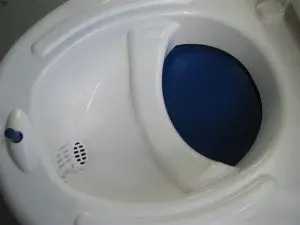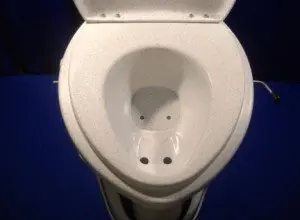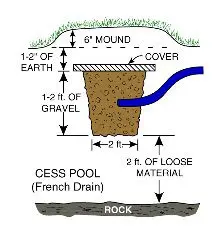How to Compost Human Waste

Composted Human Waste is excellent fertilizer for non-edible plants.
Disclaimer: These are my suggestions only, based on the comprehensive Composting Toilet Guidelines published by the Government of British Columbia in Canada, and recommendations from the World Health Organization. I make no guarantees about the accuracy of this information, and whether or not it applies to your specific situation. If in doubt you should check with your local authorities.
This is an article on how to safely and easily compost human waste. It’s not difficult, but you MUST do it right, or people could get sick. The main issue is the solid waste – feces. It’s easy to deal with urine. More on urine below.
Solid human waste (feces) can be safely composted by carefully following a few simple guidelines.
First, it is much easier to compost human waste waste from a urine diverting composting toilet. The material removed from a urine diverting toilet should be just slightly damp – perfect for composting. With a non-urine diverting toilet, the contents will be too wet for efficient composting, and the combination of urine and feces creates an anaerobic environment that allows very stinky bacteria to flourish (think outhouse or portable toilet at large public event. Ugh!). A urine diverting toilet is key to the successful composting of human waste, in my opinion.

Composted Human Waste
When the human waste is removed from the toilet, you should place it in a dedicated composter. The type of container is very, very important! It must not leach out the bottom or sides, as this might contaminate groundwater. It must be protected from rain and snow – it cannot get wet. And it must have lots of ventilation. The easiest way to meet these requirements is a rotating compost drum or barrel that sits off the ground. You can build one if you are handy, and there are many sites on the web showing how to do that. You can also buy one fairly inexpensively. In my area hardware stores carry them starting at around $100.
Some inexpensive compost tumblers have opening hatches that are a bit too small to easily accommodate a bag of human waste (which is roughly 7 gallons or 23 liters).

Redmon Compost Tumbler
You must add other material to the compost bin, such as leaves, grass, table scraps etc. It is a good idea to learn a bit about composting basics online. You need about a mix of “greens” and “browns”. Much has been written about the “correct” ratio, and no one seems to agree. I don’t think about it too much, and add roughly 50:50 greens to browns. Human waste can be considered neutral, and not a green or a brown.
If possible you should “feed” your compost bin with something every week. This keeps things going, and speeds up the composting process. At a minimum, you should definitely monitor the contents from time to time. If it seems wet (it should be just slightly damp), add dry grass, dry leaves, or some other dry carbon rich material. If it’s too dry, you’ll need to add a bit of water, and possibly more nitrogen rich material like green plants. It’s actually pretty simple and easy. Keeping the contents just slightly damp will ensure rapid and complete composting.

Compost Tumbler with large opening hatch
Additional Tips to Successfully Compost Human Waste
You need two compost bins to compost human waste. Use one at a time. When the first bin is full, start using the second bin. When the second bin is full, the first one should be ready for the plants.
There are bins with two chambers. This is intriguing, but I have not tested them. I don’t know if the capacity of each side would be sufficient.
Add lime to the compost bin. This will drastically reduce the time it has to sit, before being safe to bury or spread on non-edible plants. Use roughly 3% lime to total waste volume – i.e. if you have a full 50 gallon drum of waste, use 1.5 gallons of lime. These numbers are very approximate. With lime added, the bin needs to sit undisturbed, without adding new material, for 120 days according to the BC Composting Toilets Guidelines. This should kill all pathogens. Without the lime, the time frame is much more uncertain, and varies from 6 months to 2 years, according to various sources.
You must never put composted human waste on edible plants, because of the small chance that dangerous bacteria is still present. Always use human waste compost on non-edible plants only, or bury it.
Pee is Easy!
It is extremely easy to deal with urine from a urine diverting toilet. You can just use it as fertilizer! Some people dilute it, others do not find dilution necessary.
 You can download a wonderful guide to using urine as fertilizer from the Rich Earth Institute here. They have worked with numerous universities, public health regulators, the WHO and even the EPA to establish principles for using urine from a urine diverting toilet as fertilizer. The take away message from this guide is that, at the household level, urine is not a health risk, and can be used directly on plants without treatment. Sadly, many (most?) local governments are unaware of the facts around urine, and think it is somehow dangerous. Not true. Send them the guidelines.
You can download a wonderful guide to using urine as fertilizer from the Rich Earth Institute here. They have worked with numerous universities, public health regulators, the WHO and even the EPA to establish principles for using urine from a urine diverting toilet as fertilizer. The take away message from this guide is that, at the household level, urine is not a health risk, and can be used directly on plants without treatment. Sadly, many (most?) local governments are unaware of the facts around urine, and think it is somehow dangerous. Not true. Send them the guidelines.
If you follow these simple steps, you will have a complete, safe, odor free and low cost waste treatment facility on your property. Unlike conventional sewage or septic systems, you will completing the circle of nutrients, returning much of what you consumed back to the earth. You won’t be creating toxic sludge to be burned in a high temperature furnace, or treated in a typical sewage treatment plant using vast amounts of energy and producing considerable CO2.

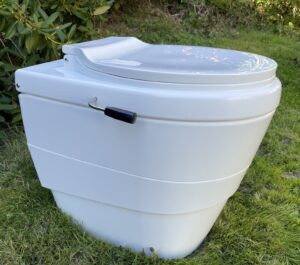
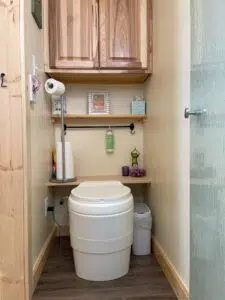
 It is critically important to properly locate the vent for your tiny house composting toilet. There is not a lot of odor coming out of the vent pipe – but there is some. The end of the vent pipe should not be within 8 feet of any area with foot traffic, a door, or an opening window. Sometimes you can just go straight out the wall and that location is fine. If not, you need to go through the wall, put a 90 degree elbow on the pipe, and run it up to the roof or above. There are other options, including going through the floor. But remember that air does not like to travel through a pipe, and the pipe must be as short and straight as possible. Consult with the person who sold you the toilet, or an HVAC specialist if in doubt.
It is critically important to properly locate the vent for your tiny house composting toilet. There is not a lot of odor coming out of the vent pipe – but there is some. The end of the vent pipe should not be within 8 feet of any area with foot traffic, a door, or an opening window. Sometimes you can just go straight out the wall and that location is fine. If not, you need to go through the wall, put a 90 degree elbow on the pipe, and run it up to the roof or above. There are other options, including going through the floor. But remember that air does not like to travel through a pipe, and the pipe must be as short and straight as possible. Consult with the person who sold you the toilet, or an HVAC specialist if in doubt.
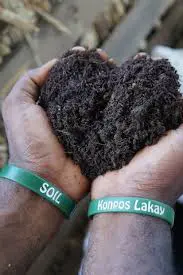



 You can download a wonderful guide to using urine as fertilizer from the
You can download a wonderful guide to using urine as fertilizer from the 
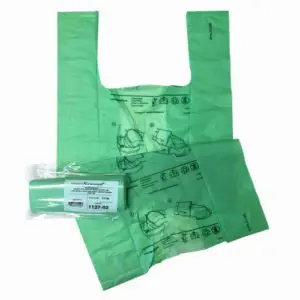



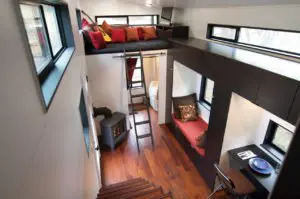 The tiny house movement has taken the nation by storm and is rapidly spreading to other countries around the globe as well. The genesis of tiny houses, as most of us picture them, came from the creative vision of a man named Jay Shafer. In the late 1990s Jay grew tired of spending winters in his Airstream which was not insulated and adapted for a midwest climate. Sparked by ideas he’d seen in some home-built RV books, he took it upon himself to design and build his own diminutive home on a trailer base. It suited his needs and saved him a ton of money over conventional housing.
The tiny house movement has taken the nation by storm and is rapidly spreading to other countries around the globe as well. The genesis of tiny houses, as most of us picture them, came from the creative vision of a man named Jay Shafer. In the late 1990s Jay grew tired of spending winters in his Airstream which was not insulated and adapted for a midwest climate. Sparked by ideas he’d seen in some home-built RV books, he took it upon himself to design and build his own diminutive home on a trailer base. It suited his needs and saved him a ton of money over conventional housing.




